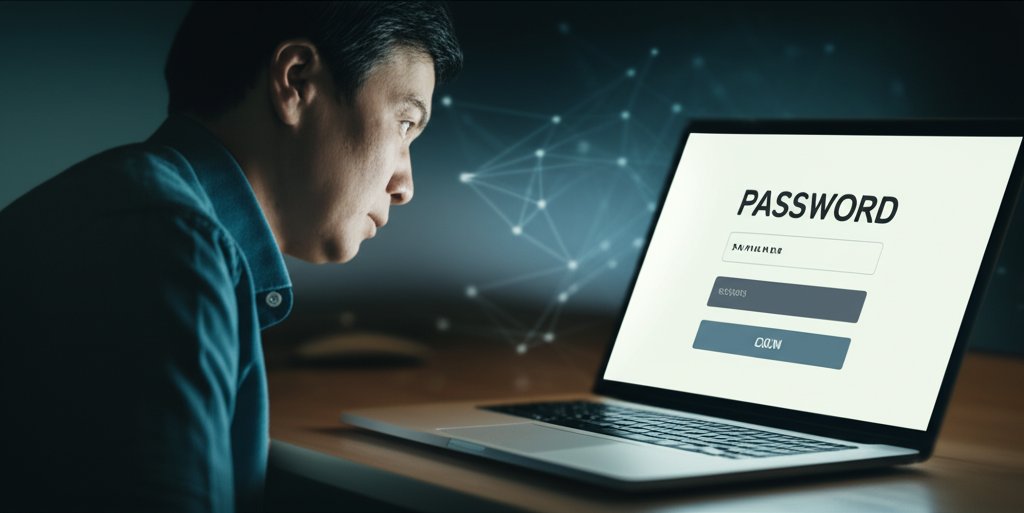We’ve all experienced it: the frustrating blank stare at a login screen, desperately trying to recall that obscure password for an account we rarely touch. Or perhaps it’s the unsettling news of a major data breach, leaving you to wonder if your carefully constructed password is now openly accessible on the dark web. It’s undeniable that traditional passwords are not just a nuisance; they represent a significant and pervasive security vulnerability.
Consider this sobering reality: studies consistently show that over 80% of data breaches involve compromised credentials, with phishing attacks alone accounting for a staggering number of successful infiltrations each year. These aren’t abstract threats; they translate into real financial losses, identity theft, and eroded trust. This grim landscape is precisely why passwordless authentication has emerged not just as a trend, but as a critical shift towards a more secure and convenient digital future.
Yet, despite the compelling arguments and clear benefits, many of us remain tethered to the password era. As a security professional, I often observe the gap between groundbreaking technical promise and the slow pace of real-world adoption. It’s more than just the technology itself; it’s about navigating human habits, integrating with existing systems, and overcoming decades of ingrained digital practices. This often requires a complete shift in security mindset, akin to understanding the truth about Zero Trust. Let’s delve into the specific hurdles that are slowing down this essential passwordless revolution for both everyday users and small businesses.
The Promise of Passwordless: A Quick Recap of Its Appeal
Before we dissect the challenges, it’s crucial to reaffirm why passwordless authentication is truly a game-changer. This isn’t just about hype; it’s about fundamental improvements to our digital safety and user experience.
Beyond Passwords: The Security Edge
The vast majority of cyberattacks originate from compromised credentials. Phishing, brute-force attacks, credential stuffing, and even simple password reuse all hinge on an attacker acquiring your password. Passwordless methods inherently bypass these common attack vectors. When you authenticate using biometrics (like a fingerprint or face scan), a physical security key, or a passkey, there is simply no password for an attacker to steal, guess, or reuse. Your unique identifier typically remains securely on your device, making it extraordinarily difficult for adversaries to intercept or exploit. This fundamental shift dramatically reduces your attack surface and significantly strengthens your online protection. For a deeper dive into the security advantages, explore our detailed analysis on whether passwordless is truly more secure.
User Convenience: A Smoother Login Experience
Beyond the robust security enhancements, there’s the undeniable convenience. Imagine accessing your banking app with just your fingerprint, logging into a work tool with a simple tap of a security key, or signing into your favorite shopping site with a glance at your device. This means no more struggling to remember complex, unique passwords for dozens of sites, no more tedious password resets, and no more insecure sticky notes near your monitor. It’s a faster, simpler, and less frustrating experience – a truly frictionless approach to security we’ve long envisioned.
The Roadblocks: Why Passwordless Adoption Isn’t So Simple
If passwordless authentication offers such clear advantages, why isn’t it universally adopted already? We’ve identified several critical barriers hindering its widespread embrace, particularly for the everyday internet user and the backbone of our economy, small businesses.
The “Fear of the New”: User Resistance and Mindset Barriers
- Deep-seated familiarity with passwords: For decades, passwords have been the default gatekeepers of our digital lives. This ingrained habit creates a psychological hurdle. Transitioning to an unfamiliar method, even if objectively superior, can feel unsettling. It’s akin to switching from a traditional car key to a keyless entry system – there’s a natural learning curve and a need to build trust.
- Misperceptions of complexity or insecurity: Many users mistakenly believe that a system without a tangible password must be “less secure” or overly complicated. The absence of a typed secret can lead to questions like, “How can something be secure if I don’t even type anything?” These perceptions often arise from a lack of clear, accessible explanations.
- Lack of clear understanding: Fundamental questions often remain unanswered for the average user. How does a passkey truly function? Where is my biometric data stored? Without a grasp of these underlying mechanics, it’s difficult to cultivate confidence in the technology.
Technical Hurdles & Compatibility Headaches
- Integration with legacy systems: This is a major challenge, especially for small businesses. Older software, custom-built applications, or existing website platforms may not natively support modern passwordless protocols like FIDO2 or passkeys. Upgrading these systems often requires significant investment in time, money, and specialized expertise that many small businesses simply don’t possess.
- Device fragmentation and compatibility: While support is rapidly expanding, not every device, particularly older models, natively supports the latest passwordless methods. You might have a state-of-the-art smartphone with robust biometric capabilities, but your older desktop PC at work might not. This disparity leads to a fragmented user experience and can deter adoption.
- Setup and onboarding complexity: Even for cutting-edge technologies, the initial setup process can be daunting. While “just enable biometrics” sounds simple, navigating system settings, understanding security prompts, and setting up reliable recovery options can be a headache for non-technical users.
The Cost Factor (Especially for Small Businesses)
- Investment in new solutions: Implementing modern authentication methods isn’t always free. This can include hardware costs for security keys, new software licenses, or ongoing subscription fees for passwordless identity providers. For a small business operating on tight margins, these costs can represent a significant barrier.
- Training and support overhead: Beyond the technology itself, there’s the human element. Employees require training on how to effectively use new systems, and IT personnel (or a designated staff member) must be available for ongoing support. This means allocating precious time and resources that small businesses often have in limited supply.
Data Privacy & Trust Concerns
- Biometrics and privacy: Users are, rightly, cautious about where their biometric data (fingerprints, face scans) is stored and how it’s utilized. Given past high-profile data breaches, the idea of sensitive biometric information being compromised can be particularly alarming.
- Device loss or theft: A common and valid concern is: “What happens if I lose my phone, which is now my primary authentication method?” The fear of losing access to all accounts, or worse, having them compromised if someone else gains access to the device, is a very real psychological barrier.
What Happens When Things Go Wrong? Recovery & Backup
- The critical role of robust recovery processes: This is arguably one of the biggest psychological hurdles. If a physical security key is lost, a phone is broken, or a device is factory reset, how does a user regain access to their accounts? Users need absolute assurance that there’s a clear, secure, and user-friendly mechanism for account recovery without reverting to less secure, outdated methods.
- Ensuring backup methods are both secure and user-friendly: Effective passwordless solutions incorporate robust backup and recovery options. However, if these backups are overly complex or still rely on insecure practices, they fundamentally undermine the security and convenience benefits of the entire system.
Actionable Guidance: Embracing Passwordless Security Today
These challenges, while significant, are not insurmountable. Empowering individuals and businesses to make the transition requires clear direction and practical steps. Here’s how everyday users and small businesses can begin their journey towards a passwordless future:
For Everyday Users: Simple Steps to Enhance Your Security
- Start small, where it’s easy: Begin by enabling passwordless options on low-stakes, frequently used accounts that already support them. Many social media apps, banking apps, and even operating systems (like Windows Hello or Face ID on Apple devices) offer biometric or passkey options. This builds confidence without high risk.
- Explore passkeys: Passkeys are a fantastic, standardized passwordless method. Look for the option to “create a passkey” on your favorite websites and apps. They are tied to your device (like your phone or computer) and sync securely, offering robust protection against phishing.
- Understand your device security: Most modern smartphones and computers come with secure enclaves that protect your biometric data. Take the time to understand how your device stores and uses this information – typically, it never leaves your device and is not uploaded to servers.
- Continue using a password manager (for now): While you transition, a robust password manager remains an essential tool. It helps you manage existing passwords securely and can even help you identify which accounts offer passwordless alternatives.
For Small Businesses: Strategic Implementation for Enhanced Protection
- Audit your existing systems: Identify which of your core business applications and platforms already support passwordless authentication. Prioritize solutions that integrate seamlessly with your most critical tools, such as Microsoft 365, Google Workspace, or your CRM.
- Leverage built-in OS features: Utilize powerful, often underutilized, passwordless tools already integrated into your existing technology, such as Windows Hello for Business or the touch/face ID capabilities on modern devices. These can provide enterprise-grade security without significant additional investment.
- Prioritize cloud-based, subscription solutions: Look for identity providers that offer passwordless options as part of a cloud-based service. For businesses leveraging these platforms, understanding cloud penetration testing is crucial to ensure their security. These often require minimal upfront investment, reduce the need for specialized IT staff, and can scale easily with your business.
- Educate and empower your team: Training is paramount. Clearly explain the “how and why” of passwordless authentication to your employees in simple, non-technical terms. Focus on the benefits of increased security and convenience, and provide clear support channels for any questions or issues.
- Implement phased rollouts: Don’t try to go passwordless everywhere at once. Start with a single, less critical application, or pilot it with a small, tech-savvy team. This allows for feedback, adjustments, and builds confidence before wider adoption.
The Future is Passwordless (But We Need to Get There Together)
The journey to a truly passwordless world is not a sprint; it’s a strategic marathon. While legitimate hurdles exist, the promise of significantly enhanced security and unparalleled convenience makes it a destination well worth reaching. We are moving towards a future where managing your online identity is not only safer but genuinely simpler and less burdensome.
As individuals, we can start by actively exploring and enabling the passwordless options already present in our favorite apps and services. For small businesses, it’s about asking the right questions, seeking scalable and affordable solutions, and prioritizing ongoing user education. We simply cannot afford to remain perpetually tethered to traditional passwords. The risks associated with them are too high, and the compelling benefits of moving beyond them are too significant to ignore.
To begin your transition and immediately fortify your digital defenses, implement a robust password manager and enable Two-Factor Authentication (2FA) on all your critical accounts today. These are fundamental and powerful steps towards preparing for a more secure, passwordless future.









